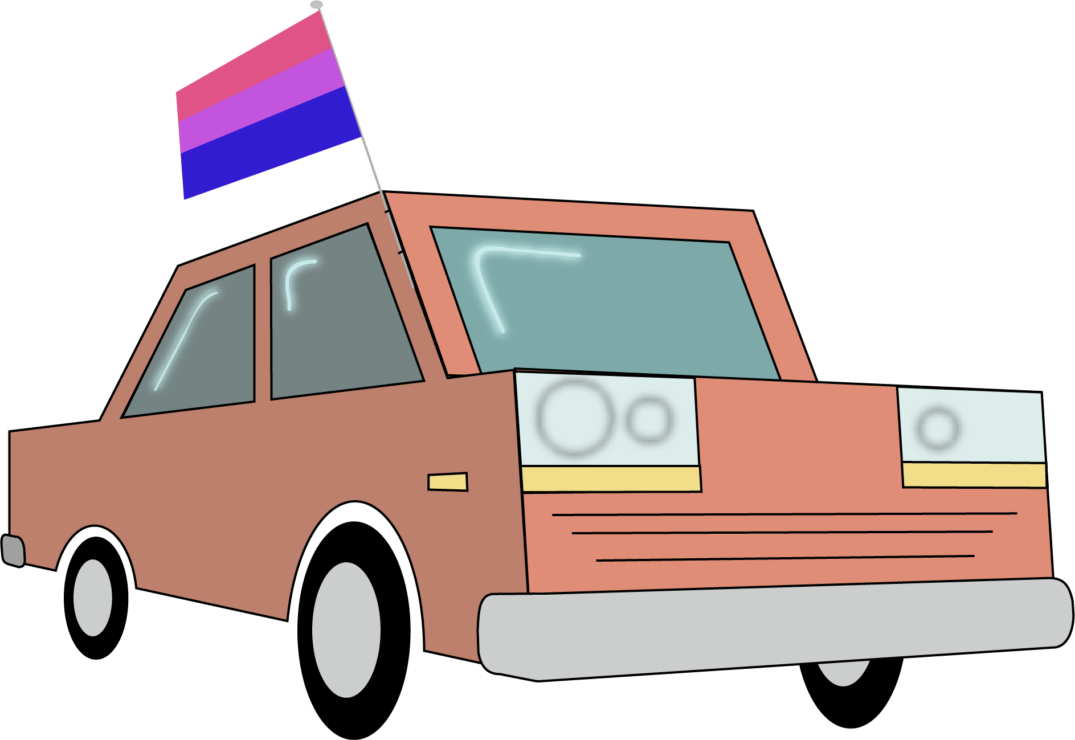The ongoing struggle with identity, stigma, and being “gay enough”

“What about bisexuals?” I said to my mom as we drove down Gorge Road one grey afternoon.
“Bisexuals?”
I was confused. My mom worked in the dance business during the 80s. Hadn’t she seen enough queer folk for bisexuality to seem reasonable?
“Yeah, you said gay people deserve equal opportunity. What about bisexuals?” We had been discussing gay rights for 15 minutes. When I brought up bisexuality, I felt the energy of the conversation flicker and die.
“Bisexual people aren’t really different,” she said. “They’re just one step away from realizing they’re gay. Believe me.”
A minute ago I’d been sure I was bisexual. Somehow, my mom’s conviction that bisexuality was a lie had poked a hole in my fragile bi-bubble. If someone close to the LGBT community was this closed-minded about bisexuals, what about the rest of the world?
Bisexual erasure isn’t new. The definition, according to Wikipedia, is: “the tendency to ignore, remove, falsify, or re-explain evidence of bisexuality … [it] can include the belief that bisexuality does not exist.” When I first read this, I instantly remembered moments where I’d faced bisexual erasure.
In the news, I heard reporters misinform the public that bisexuals are dangerous because they have a high rate of STIs. I have memories of favourite television shows which labelled their bisexual characters as confused, slutty, or cheaters and movies that painted bisexuality as a phase people grow out of — a pit stop at the crossroads of Heteroville and Gay Junction.
As I started gathering stories from my bisexual friends for this article, I began to realize the genuinely pervasive power of these ideas. All of them had experienced bisexual erasure and often have had people tell them things like they’re “just gay” or “going through a phase.”
“I’ve been told by gay men … ‘you can’t have both,'” said Luna. “I never, EVER feel gay enough.”
Despite being the ‘B’ in LGBTQIA+, society — and even our brothers and sisters in queer — don’t always believe we belong. We’re under a microscope, yet somehow people still can’t see us. Bi-erasure is an epidemic.
GLAAD is a media-monitoring organization founded by people in the LGBTQIA+ community in the United States. They describe bisexuals as facing “severe health disparities.” According to GLAAD, we have a higher rate of anxiety, depression, and other mood disorders compared to straight or gay individuals.
Bi-erasure doesn’t only affect how other people feel about bisexuals; it affects how bisexual people feel about existing in the world. It’s difficult to maintain healthy self-esteem when your only representation is negative.
I asked my friends, “Has bi-erasure affected your view of your own identity?”
“Definitely,” Steve told me. “I found myself thinking I must be confused.”
“And did you come out to your parents?”
“No, not really,” Steve confided. “The idea of telling my dad was scary. I didn’t want to create more distance between us.”
Conversation is a gateway. Without support from our parents and community, it’s easy to become depressed, anxious and almost afraid to exist.
When I came out to my own mom, it was in passing on a car ride home. I had expected to feel scared. Instead, I felt empowered. I had talked about it. She didn’t treat me differently after that, but I felt different. I had started the conversation I was afraid of, and I felt freedom and certainty about my identity that I hadn’t before.
We need to talk about bisexuality. Bi people deserve to take pride in their identity, and they deserve to tell their stories. Our communities need representation in the media that shows bi people as they are, without the mystery and fear that has caused so much pain and confusion.
Creating a conversation about something removes the stigma. Open expression can help repair some of the damage bi-erasure has done to the LGBT community. So, be proud. Tell your story. Because your identity is valid, you are valid, and you deserve to be heard.








